
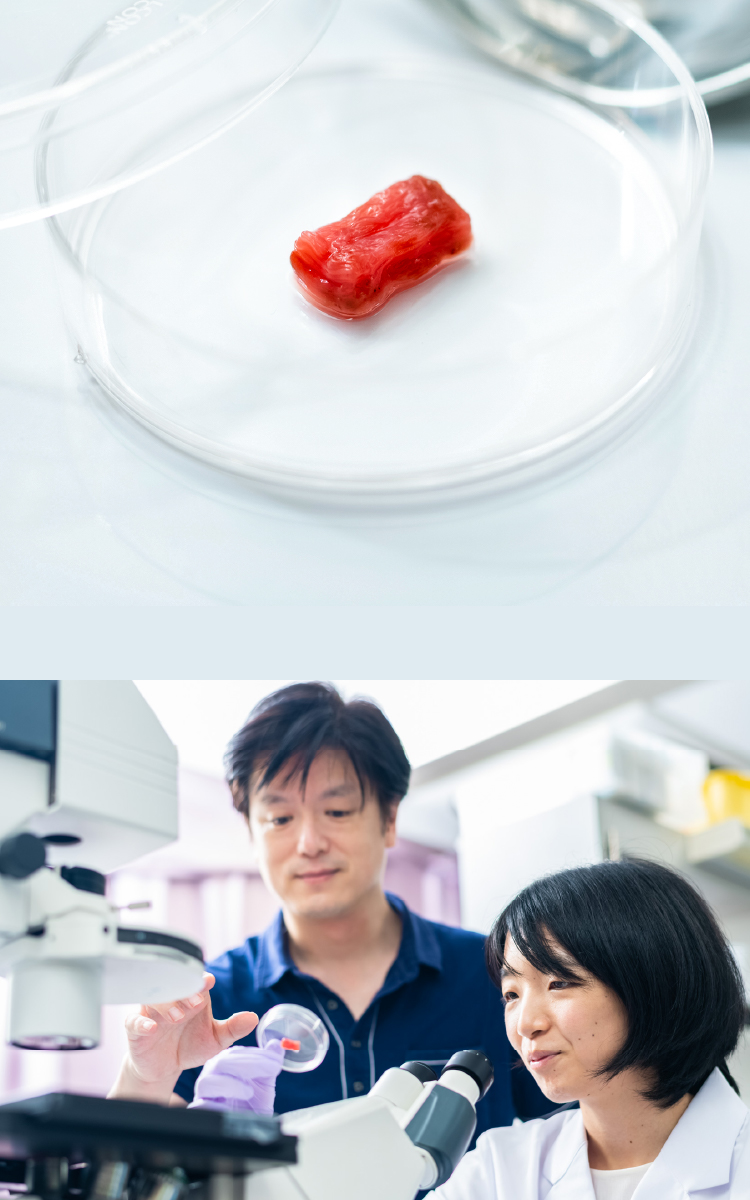
Creating cultured meat sought
by the next generation
Growing Steak Meat in a Lab
Why research on cultured meat is necessary
Increased demand for meat
The demand for meat is rapidly increasing along with the global population growth and the economic development of emerging countries. According to the Food and Agriculture Organization of the United Nations (FAO), demand is expected to increase 1.8 times by 2050 compared to that of 2007. In order to meet this growing demand, new alternatives to traditional livestock meat are necessary.
One such option is cultured meat. It is derived from animal cells that undergo tissue cultivation outside animal bodies. Cultured meat is gaining attention worldwide as a sustainable food ingredient, and the share of meat substitutes including cultured meat in the meat market is expected to increase.
Forecast share of the global meat market
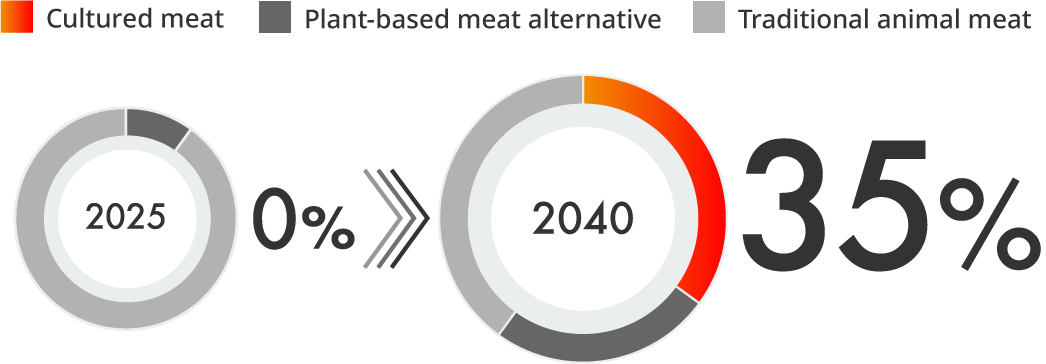
- *Source: United Nations, World Bank, expert interviews; Kearney analysis
Environmental impact of livestock meat production
Livestock production requires vast land and a large amount of water, especially when livestock are fed with cereal grains such as wheat and corn. In addition, when cows burp, they release gas containing methane, a greenhouse gas that traps heat from the sun more than 25 times as efficiently as carbon dioxide. Livestock therefore has a serious impact on the global environment.
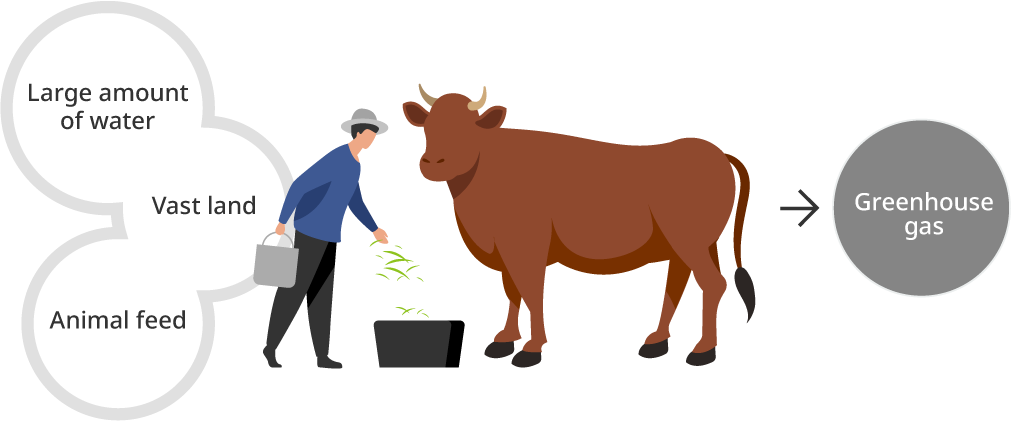
Sanitary control
Cultured meat is produced by cell cultivation under an aseptic condition in a strictly-controlled sanitary environment. Accordingly, cultured meat has a low risk of bacterial or viral contamination and therefore its food poisoning risk is significantly lower than that of livestock meat.

What is cultured steak meat?
Meat alternatives to traditional animal-derived meat include meat substitutes used for vegetarian foods, plant-based meat alternatives from raw materials derived from plants, and cultured meat produced by tissue cultivation of animal cells outside the body. The level of skills and technology required in research differs depending on the type of meat substitutes. The NISSIN FOODS Group is engaging in the research of cultured steak meat, which requires the most sophisticated level of technology.
Cultured ground meat
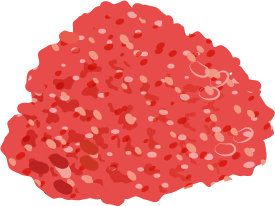
Animal cells are cultivated outside the body to produce cultured ground meat. Since it does not have a three-dimensional structure like the muscle tissue of traditional meat, it does not replicate the texture. In the Netherlands in 2013, a hamburger made of cultured ground meat appeared on the market. One major issue was the production cost - around 30 million yen for one hamburger.
Cultured steak meat
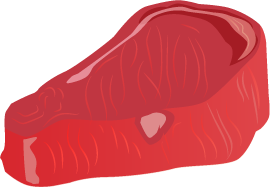
The three-dimensional structure of muscle tissue was produced in a laboratory thereby replicating the texture of traditional meat. In this process, it is essential to fuse the cells together and convert them into a long, narrow structure. Even in comparison with cultured ground meat, a significant advancement in technology is required.
Why is the NISSIN FOODS Group carrying out research on cultured meat?
Shokuso Isei - Create foods to serve society
The NISSIN FOODS founder Momofuku Ando continued to tackle the challenge of creating new foods throughout his life. His spirit still lives in the employees of the NISSIN FOODS Group.
The NISSIN FOODS Group will tackle the challenge of creating a new food culture and realizing a sustainable society by carrying out research on cultured meat.
The spirit of the founder of the NISSIN FOODS Group
- 食足世平
- Peace will come to the world when there is enough food
- 食創為世
- Create foods to serve society
- 美健賢食
- Eat wisely for beauty and health
- 食為聖職
- Food related jobs are a sacred profession
Creating Cultured Steak Meat
The NISSIN FOODS Group began joint research on cultured meat with the University of Tokyo in August 2017, taking on the unprecedented challenge of creating thick cultured steak meat.
Pursuing Food Possibilities Never Achieved Before
Potential of Cultured Steak Meat
The NISSIN FOODS Group established its environmental strategy EARTH FOOD CHALLENGE 2030 to commence various initiatives aimed at realizing a sustainable society and raising corporate value. One such initiative being undertaken is the creation of cultured steak meat, which is being carried out by the Cultured Meat Project Team at the Global Innovation Research Center.
Furuhashi says they are carrying out research day after day to make cultured steak meat a reality, which no one has ever been able to do, teaming up with Professor Takeuchi of the University of Tokyo.

Cultured Meat Research Made Possible Through Collaboration between the NISSIN FOODS Group and the University of Tokyo
Shoji Takeuchi is a professor at the Graduate School of Information Science and Technology and the Institute of Industrial Science (IIS), the University of Tokyo. He had already been undertaking research on the three-dimensional formation of muscle tissue outside the body. Muscles made from cultured cells were already used in a wide range of fields, including drug discovery test models and next-generation robotic research. Professor Takeuchi says he was confident that cultured steak meat could be produced by applying this technology. However, he was unable to secure proper funding for his research as companies and the university did not understand the value of his research.
According to Professor Takeuchi, it was around this time that the NISSIN FOODS Group came to him. Both parties agreed to develop cultured steak meat together and immediately embarked on joint research.

Professor Shoji Takeuchi, The University of Tokyo
Major Step Toward the Commercialization of Cultured Steak Meat
Japan Has the Optimal Environment and Resources for the Research
Japan is already ahead in regenerative medicine and research on muscle tissue. This nation boasts highly-advanced technology for building three-dimensional tissue outside the body. While research on cultured meat is conducted all over the world, Japan’s technological prowess offers an advantage in this field.
Professor Takeuchi said that although it is an extremely challenging goal to create muscle and internal organs, which usually occurs inside the body, from scratch outside the body, he finds this challenge fulfilling as a researcher.
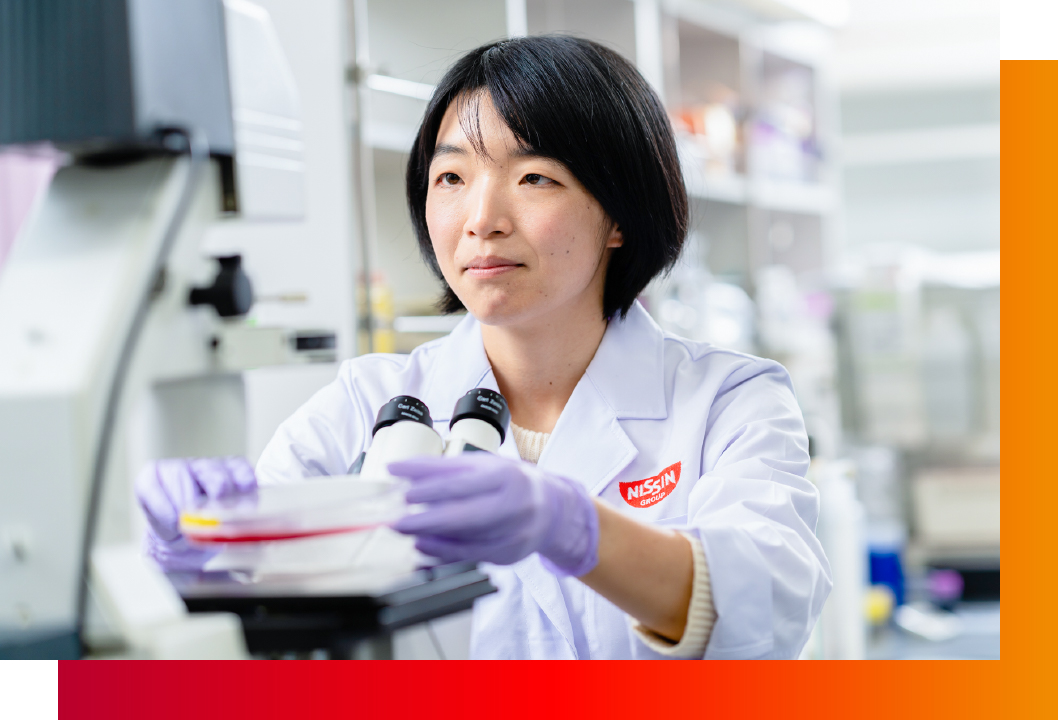
Mai Furuhashi, NISSIN FOODS HOLDINGS CO., LTD.
Barriers to Research
The texture of traditional meat comes from the three-dimensional structure of muscle tissue inside the muscles. Producing this three-dimensional structure outside the body in a laboratory requires not only an increase in muscle tissue but also further maturation of muscle cells (fusing the cells to change them into a long, narrow structure). However, to mature muscle cells outside the animal’s body, which differs from the natural process of muscle cells maturing inside the animal’s body, technology to ensure that nutrients were absorbed evenly throughout the muscle cells and to properly align them was required.
According to Furuhashi, this actually was the biggest obstacle to this research on cultured steak meat.

Mai Furuhashi, NISSIN FOODS HOLDINGS CO., LTD.
The First in the World to Successfully Produce Cultured Meat in the Form of a Diced Steak
A research group made up of members from the NISSIN FOODS Group and the Institute of Industrial Science, the University of Tokyo confirmed that injection of Vitamin C to bovine muscle cells during the cultivation process promotes maturation. In addition, three-dimensional cultivation, as opposed to the traditional planar cultivation of bovine muscle cells, was conducted to produce a thick piece of cultured meat. Owing to this, the team succeeded in producing a long, narrow muscle tissue featuring the unique striped sarcomere structure. Furthermore, by stacking the muscle tissue modules and using a special method for culturing, the team succeeded in producing the world’s first large three-dimensional muscle tissue cube (1.0cm x 0.8cm x 0.7cm). This was a significant first step toward the commercialization of cultured steak meat with the same texture as real meat.
Japan’s First Tasting of Cultured Meat by Those Involved in the Research
Traditional cultured meat is not edible because it is made from muscle cells from beef and inedible material. In order to produce edible cultured meat, the following two requirements must be met: utilization of edible ingredients only and a tasting system in the research processes.
The research team succeeded in the production of edible cultured meat by using originally-developed edible serum and edible blood plasma gel.
Based on this result, we established a process up to tasting of cultured meat, making use of knowledge and experience of the NISSIN FOODS Group. As the University of Tokyo Ethics Review Committee approved the process, the first tasting event took place in March 2022 by those involved in the research.
Although Professor Takeuchi had expected a slightly softer texture, the cultured meat actually had a firm and chewy texture. While it did not exactly have the same taste as traditional meat, it did contain umami. All in all, he believed the quality was acceptable for cultured meat eaten for the first time.
Furuhashi found the chewy texture suitable for food. She was surprised that she sensed a touch of umami although the meat did not contain tastes derived from meat fat and iron.
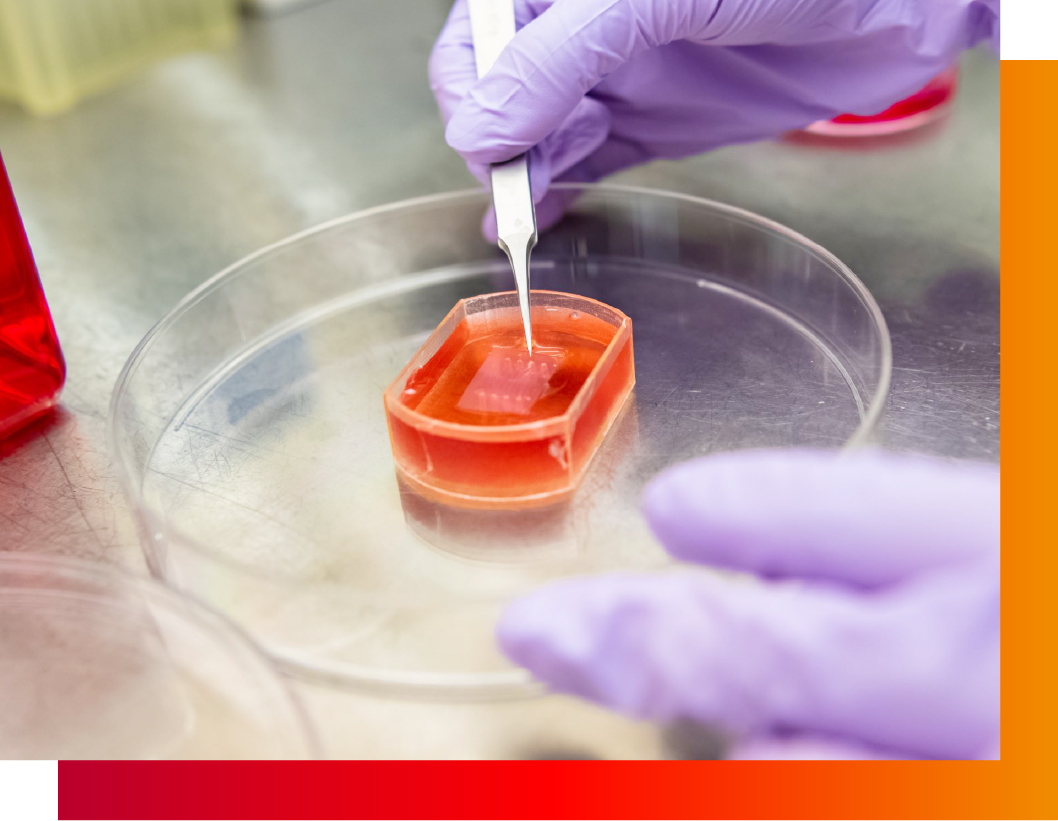
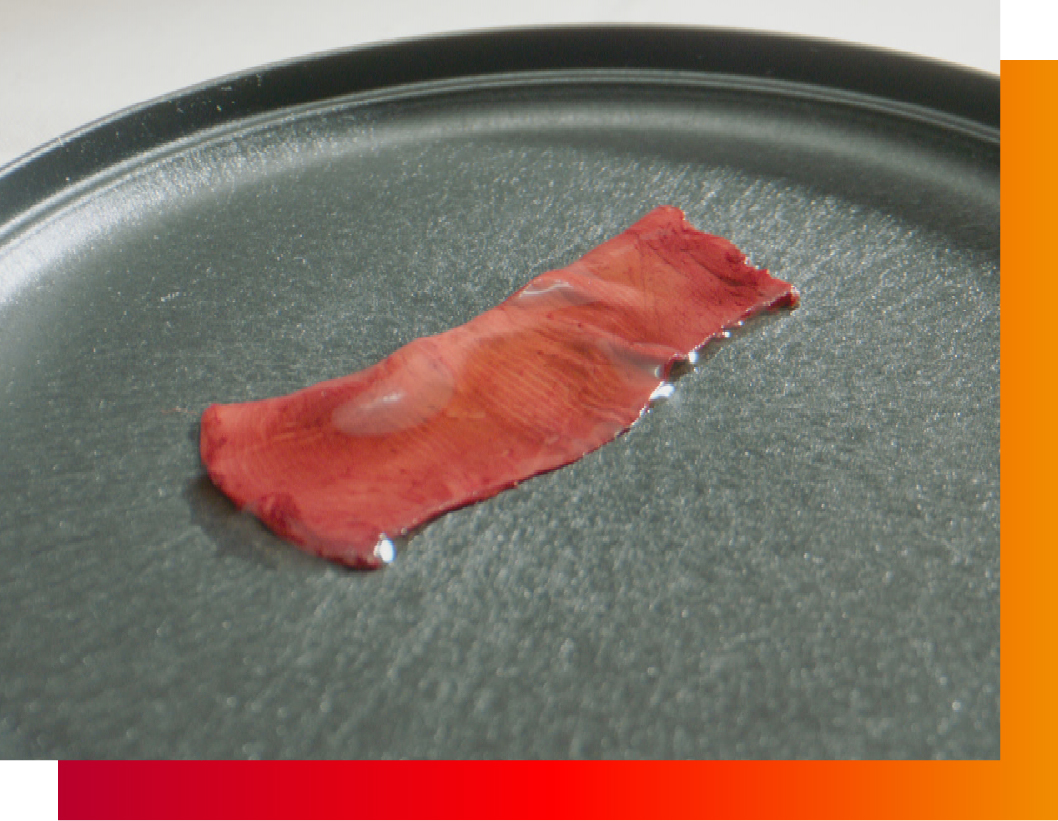
Creating Meals of the Future
Striving to Develop Basic Technology in Fiscal Year 2025
The NISSIN FOODS Group aims to establish the basic technology for cultured steak meat in Fiscal Year 2025. The Group is moving forward with research to create larger pieces of cultured meat and to faithfully reproduce the original taste and texture of traditional meat.
In the future, the cultured meat market has the potential to grow into a major market as a new meat option. The technology used to produce cultured meat is also not limited to beef but can be applied to other resources that may become depleted, such as tuna and eel. According to Furuhashi, her friend who saw the news about cultured meat on TV contacted her and said that she also wants to try cultured meat. Her elementary school teacher also gave her an encouraging message. She has more opportunities to feel expectation and attention.
Cultured steak meat could solve global issues, including meat shortage due to the population increase and environmental impact due to livestock meat production.
The Group continues to undertake challenges to make cultured meat a new food option in the near future.
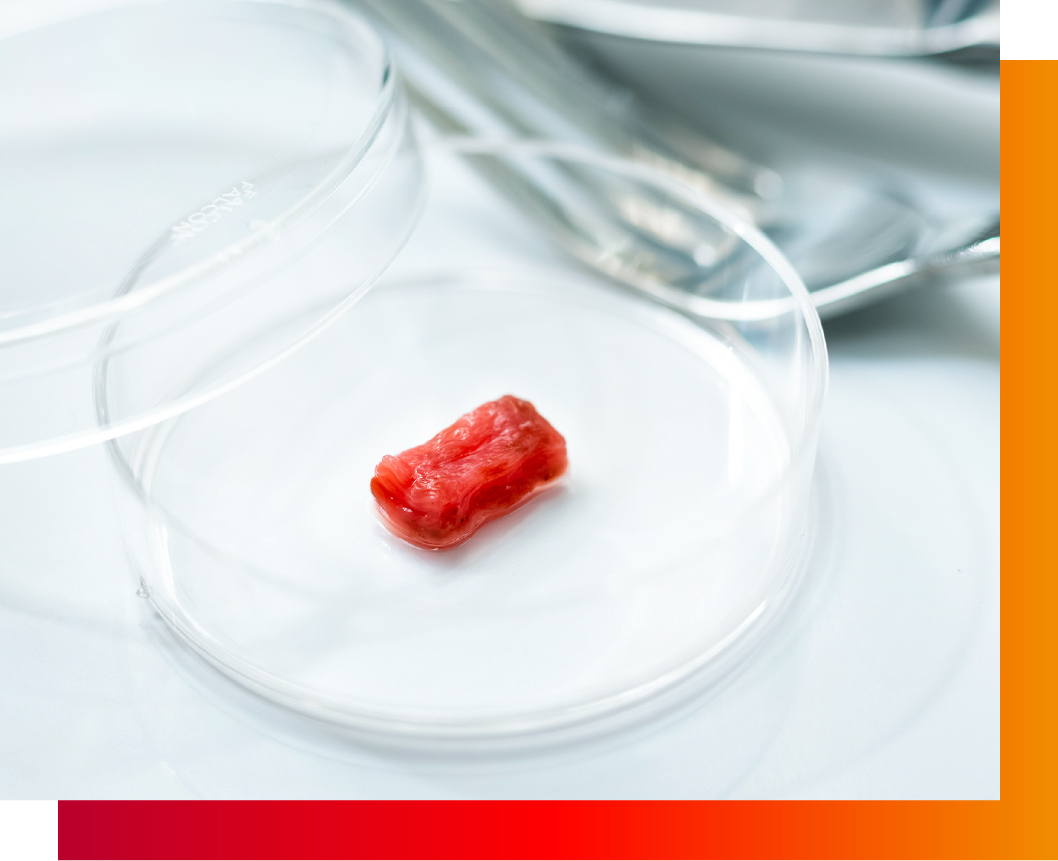
How Cultured Meat
Is Produced by
The NISSIN FOODS Group
STEP1Increasing cells
-
01Increasing bovine muscle cells
-
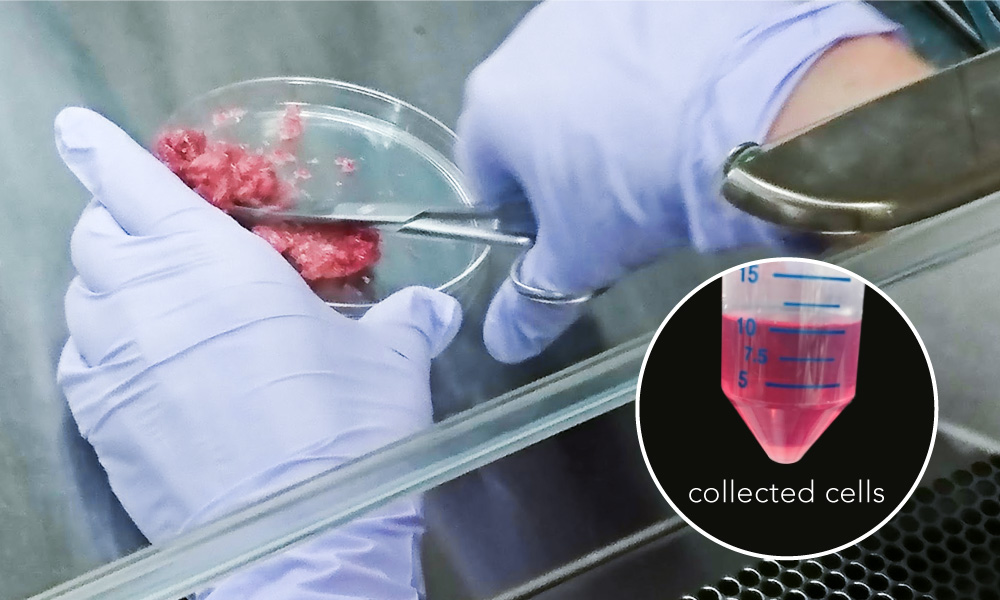
Allow the enzymes to act on the finely chopped bovine muscle cells to separate the connection between the cells. After this, the cells are cultured for around 1 week until there are about 100 million cells.
STEP2Creating structure
-
01Creating myoblast modules from cultured cells
-
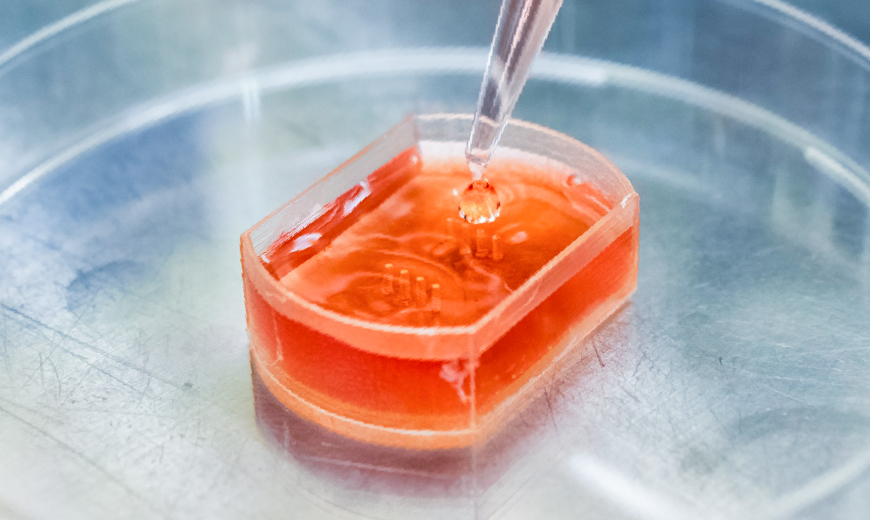
A mixture of cultivated cells and collagen is poured into a mold. The produced sheet-like myoblast modules are aligned to replicate the structure of traditional meat.
-
02Stacking myoblast modules
-
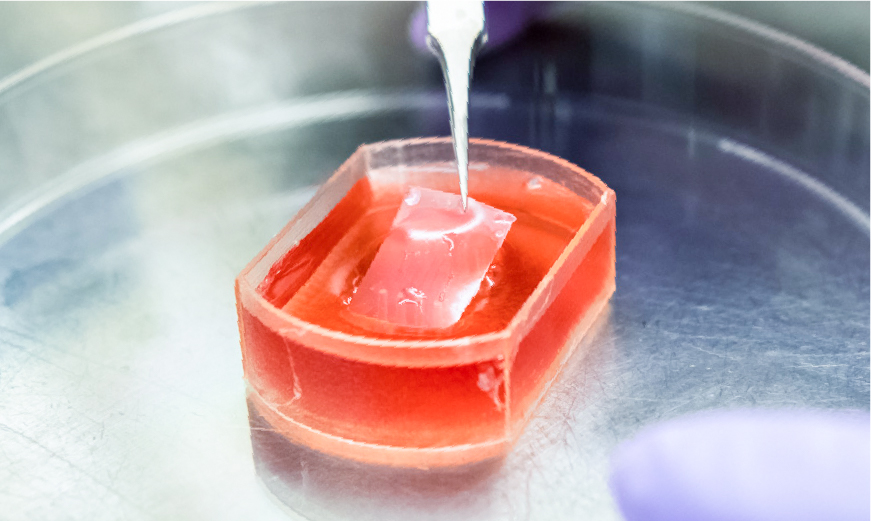
We alternately stack two types of differently-shaped myoblast modules. By continuing to culture the cells in a state where both sides are fixed so there is no shrinkage, the myoblast modules are fused together. A thickness of about 1 centimeter is achieved by stacking around 30 modules.
-
03Discarding the culture solution and culturing cells using a new solution
-
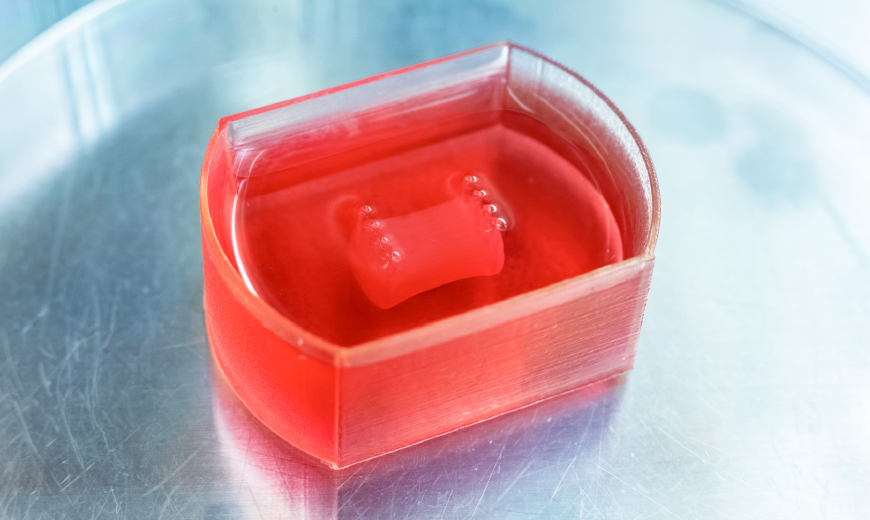
We then cultivate the cultured cells through trial and error to find the optimal conditions for growth.
-
047-day culturing period
-
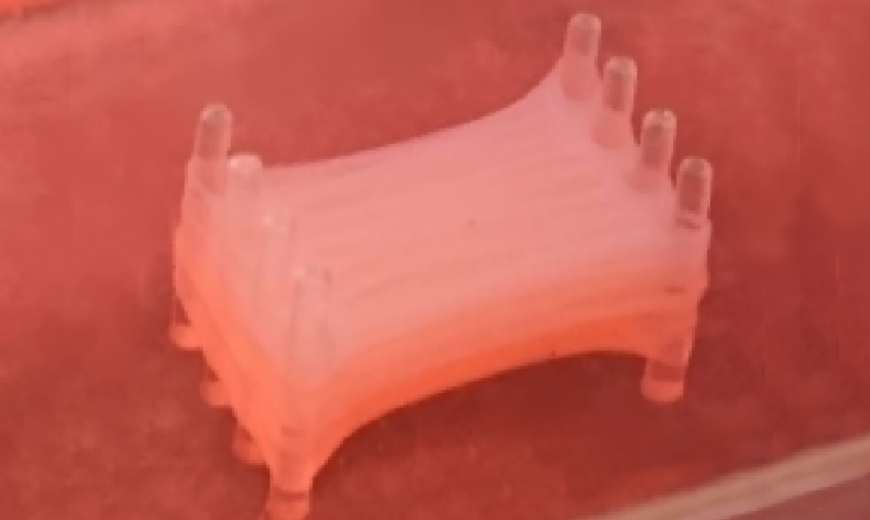
By continuing cultivation for a 7-day period, the cells inside the tissue grow and become cultured meat in the size of a cube about 1 centimeter in dimension.
History of Research on Cultured Meat
- August 2017
-
Start of joint research by NISSIN FOODS HOLDINGS CO., LTD. and Takeuchi Lab, the University of Tokyo
NISSIN FOODS HOLDINGS CO., LTD. proposed joint research to Professor Shoji Takeuchi of the Graduate School of Information Science and Technology, the University of Tokyo. Joint research on cultured steak meat started.

- March 2019
-
Success in the production of bovine muscle tissue in the form of a diced steak for the first time in the world
The team succeeded in producing the world’s first large three-dimensional muscle tissue cube (1.0cm x 0.8cm x 0.7cm) using muscle cells from beef.
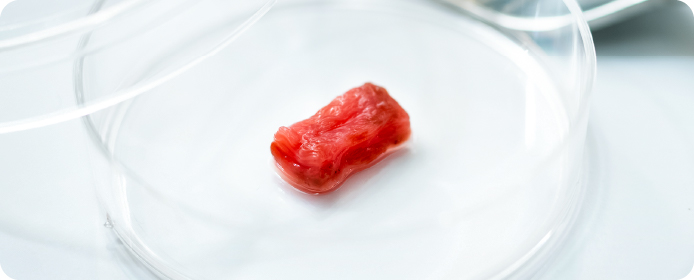
- November 2019
-
Japan’s first large-scale survey of opinions on cultured meat
We conducted an opinion survey of 2,000 men and women aged between 20 and 59 with the research group led by Associate Professor Aiko Hibino of the Faculty of Humanities and Social Sciences, Hirosaki University.
Forecast share of the global meat market

- March 2022
-
Success in the production of Japan’s first edible cultured meat
We succeeded in the production of edible cultured meat in the framework of business-academia collaboration for the first time in Japan. Sensory evaluation by humans became possible, which will be led to great advance research on taste, aroma, texture, and other aspects of "deliciousness.
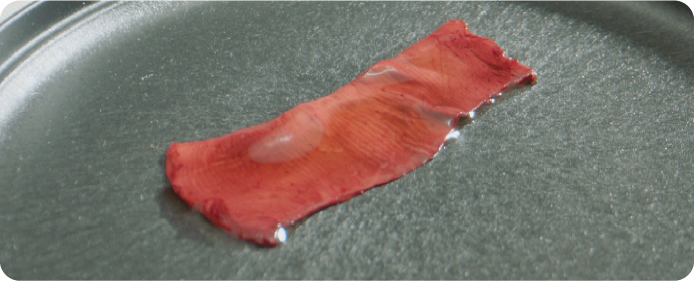
- In Fiscal Year 2025
-
Establishment of basic technology to produce cultured steak meat (7cm width x 7cm length x 2cm thickness, about 100g)
The WAVE
the NISSIN FOODS Group’s technology, development, and research center
The WAVE is the NISSIN FOODS Group’s technology, development, and research center, which consists of the Global Innovation Research Center and the Global Food Safety Institute. The mission of the WAVE is “to create a wave of the most advanced food technologies and continuously send the powerful undulations to the world.” We aim to fulfill our responsibility as a food manufacturer through continuous innovation and food safety measures.

